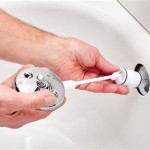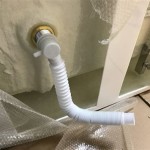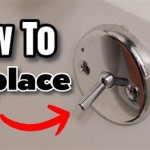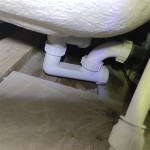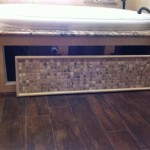How Much to Replace a Bathtub with a Walk-In Shower
Replacing a bathtub with a walk-in shower is a bathroom remodeling project that can significantly improve accessibility, safety, and aesthetics. However, understanding the associated costs is crucial for effective budgeting and planning. This article delves into the various factors that influence the price of this type of conversion, providing a comprehensive overview to help homeowners make informed decisions.
The total cost of replacing a bathtub with a walk-in shower can vary widely, typically ranging from $3,000 to $15,000 or even more. This price range is affected by numerous variables, including the size of the shower, the materials used, the complexity of the plumbing and electrical work, and the labor costs in your geographic location.
Factors Influencing the Cost
Several key elements contribute to the overall expense of converting a bathtub into a walk-in shower. These factors should be carefully considered to develop a realistic budget for the project.
1. Shower Size and Configuration: The dimensions of the walk-in shower directly impact the cost. Larger showers require more materials, such as tile, glass, and shower base materials. The configuration also matters. A simple rectangular shower generally costs less than a custom-shaped shower or one with built-in seating or niches.
2. Materials: Material choices are a significant cost driver. The type of shower base, wall surround, and shower door or enclosure will substantially affect the total price. Common materials include:
* Shower Base: Acrylic shower bases are often the most economical option, while tile bases can be more expensive due to the labor involved in installation and waterproofing. Stone resin and cultured marble bases offer a balance of aesthetics and durability but fall in the mid-price range.
* Wall Surround: Tile is a popular choice for shower walls, offering a wide range of design options. Ceramic tile is generally the most affordable, followed by porcelain, and then more expensive options like natural stone (e.g., marble, granite) or glass tile. Acrylic or fiberglass shower panels are a less expensive alternative to tile but may not offer the same aesthetic appeal.
* Shower Door/Enclosure: A simple shower curtain is the least expensive option, but most homeowners opt for a glass shower door or enclosure for a more modern and watertight design. Framed shower doors are typically more affordable than frameless doors, which require thicker glass and more precise installation.
3. Plumbing and Electrical Work: Converting a bathtub to a walk-in shower often requires modifications to the existing plumbing. Moving the showerhead, adding body sprays, or installing a new drain can increase plumbing costs. Electrical work may also be necessary if you are adding new lighting, a ventilation fan, or heated floor.
4. Labor Costs: Labor is a significant portion of the overall cost. Hiring a licensed plumber, electrician, and contractor will ensure that the work is done correctly and up to code. Labor costs can vary depending on the contractor's experience, the complexity of the project, and your geographic location. Obtaining multiple quotes from different contractors is advisable to compare prices and services.
5. Accessibility Features: If the primary goal of the conversion is to improve accessibility, adding features like grab bars, a shower seat, or a handheld showerhead will increase the cost. These features are essential for individuals with mobility limitations and can significantly enhance the safety and usability of the shower.
6. Demolition and Removal: The cost of demolition and removal of the existing bathtub must be factored in. This includes disconnecting the plumbing, removing the tub, and disposing of the debris. Some contractors include this cost in their overall estimate, while others charge it separately.
7. Permits: Depending on local regulations, a building permit may be required for the bathroom renovation. Permit fees vary by municipality and the scope of the work. Failing to obtain the necessary permits can result in fines and delays.
8. Unexpected Issues: During the demolition process, unexpected issues may arise, such as hidden water damage, mold growth, or outdated plumbing. These problems can add to the overall cost of the project. It is prudent to set aside a contingency fund to cover any unforeseen expenses.
Cost Breakdown Examples
To illustrate the potential cost variations, here are a few examples of different scenarios:
Scenario 1: Basic Conversion This involves replacing a standard bathtub with a simple walk-in shower using a pre-fabricated acrylic shower base, standard ceramic tile surround, and a framed glass shower door. The plumbing and electrical work are minimal. * Materials: $1,000 - $2,000 * Labor: $2,000 - $3,000 * Total Estimated Cost: $3,000 - $5,000
Scenario 2: Mid-Range Conversion This entails a custom-tiled shower base, porcelain tile surround, frameless glass shower door, and moderate plumbing and electrical upgrades (e.g., moving the showerhead, adding a niche). * Materials: $3,000 - $5,000 * Labor: $3,000 - $5,000 * Total Estimated Cost: $6,000 - $10,000
Scenario 3: High-End Conversion This includes a custom-built shower with a natural stone tile surround, a frameless glass enclosure with high-end hardware, multiple showerheads, body sprays, heated floor, and extensive plumbing and electrical work. * Materials: $5,000 - $10,000+ * Labor: $5,000 - $10,000+ * Total Estimated Cost: $10,000 - $20,000+
Strategies to Reduce Costs
While replacing a bathtub with a walk-in shower can be a significant investment, there are several strategies to help reduce the overall cost without compromising quality or safety.
1. Choose Cost-Effective Materials: Selecting more affordable materials, such as ceramic tile instead of natural stone or acrylic shower panels instead of custom tile work, can significantly lower material costs. Research different material options and compare prices before making a decision. Consider purchasing materials during sales or from discount retailers.
2. Keep the Same Footprint: Maintaining the existing plumbing layout can minimize plumbing costs. Avoiding the need to relocate drain lines or water supply lines will reduce the amount of labor required. If possible, keep the shower in the same location as the bathtub.
3. DIY Some of the Work: Depending on your skills and experience, you may be able to handle some of the simpler tasks, such as demolition, painting, or installing the shower door. However, it is essential to hire professionals for plumbing, electrical, and waterproofing work to ensure that the job is done correctly and safely.
4. Obtain Multiple Quotes: Get quotes from at least three different contractors to compare prices and services. Make sure each quote includes a detailed breakdown of the costs for materials, labor, and any other associated fees. It is advantageous to choose a contractor not solely based on price but also considering their experience, reputation, and reviews. Verify that the contractor is licensed and insured.
5. Consider Financing Options: If you do not have sufficient funds to pay for the project upfront, consider exploring financing options, such as a home equity loan, a personal loan, or a credit card with a low introductory interest rate. Carefully evaluate the terms and conditions of each financing option before making a decision.
6. Plan Ahead: Careful planning can prevent costly mistakes and delays. Have a clear vision for the design of the shower before starting the project. Discuss your requirements and budget with the contractor to ensure that everyone is on the same page. Order materials in advance to avoid potential delays due to supply chain issues.
7. Explore Tax Incentives: In some cases, homeowners may be eligible for tax incentives or rebates for making accessibility improvements to their homes. Check with your local government or tax advisor to see if any such programs are available in your area. Specifically, if the walk-in shower is deemed a medical necessity, it may qualify for certain deductions.
Long-Term Cost Considerations
Beyond the initial cost of the conversion, it is important to consider the long-term costs associated with a walk-in shower. These include maintenance, repairs, and potential increases in home value.
Maintenance: Regular cleaning and maintenance are necessary to keep the shower in good condition. This includes cleaning the tile, glass, and shower fixtures. Depending on the materials used, you may need to apply sealant or grout sealer periodically to prevent water damage.
Repairs: Over time, repairs may be required to address issues such as leaky faucets, cracked tiles, or damaged shower doors. Budget for potential repair costs when planning the project.
Home Value: Replacing a bathtub with a walk-in shower can potentially increase your home's value, particularly if it enhances accessibility and appeals to a wider range of buyers. However, it is important to consider the demographics of your neighborhood and the preferences of potential buyers. In some cases, having at least one bathtub in the home may be desirable for families with young children.
Water Usage: While not directly a cost of the conversion itself, walk-in showers can sometimes lead to increased water usage compared to taking a bath. This is especially true if multiple showerheads or body sprays are installed. Be mindful of water consumption and consider installing low-flow showerheads to conserve water and reduce utility bills.

Master Bathroom Renovation Converting A Bathtub Into Walk In Shower Our Handcrafted Life

Cost To Convert A Tub Into Walk In Shower Apartment Geeks

Upgrade Your Bathtub To A Walk In Shower With Jds Bath

How Much Does A Walk In Shower Cost 2025

Walk In Shower Tub Pros Cons And Installation Costs

How To Convert A Tub Walk In Shower Budget Dumpster

Why Replace A Bathtub With Shower 1 800 Hansons

Affordable Bathroom Remodel And Shower Replacement Company

2025 Walk In Shower Cost Guide By Size Type

Tub To Shower Conversion Naples Repair Remodeling
Related Posts

